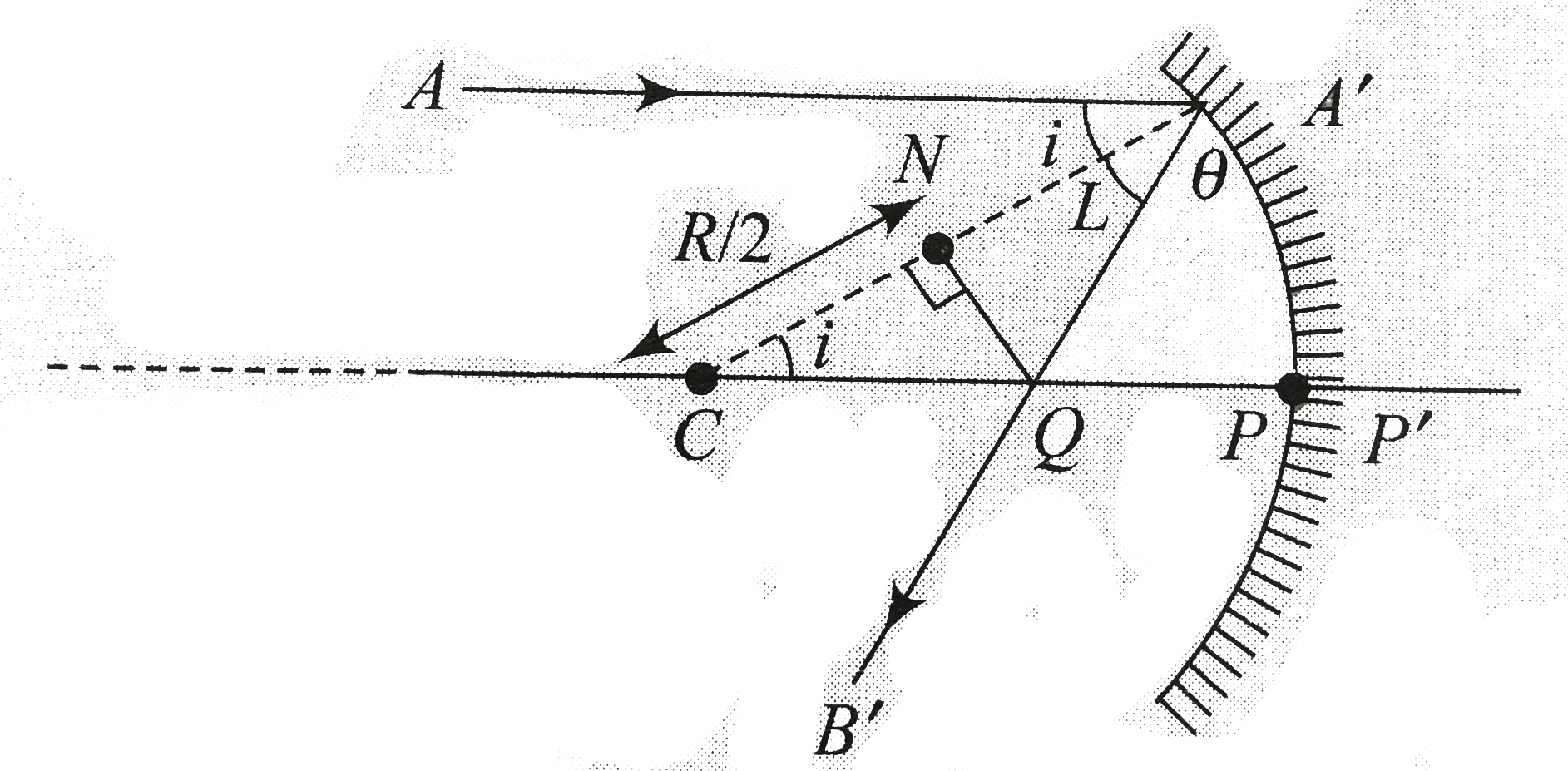Find the distance CQ if incident light ray parallel to principal axis is incident at an angle i. Also, find the distance CQ if i→0 .

In triangle CNQ, cos i=R/2CQ⇒CQ=R/2cosi
As i increases cosi decreases. Hence, CQ increases.
If i is a small angle, cosi≈1 (see Fig. (b)).
∴CQ=R/2
So, paraxial rays meet at a distance equal to R/2 from center of curvature, which is call focus.
Topper's Solved these Questions
- GEOMETRICAL OPTICSBOOK - CENGAGE PHYSICSCHAPTER - GEOMETRICAL OPTICSEXERCISE - Solved Examples
15 Videos
- GEOMETRICAL OPTICSBOOK - CENGAGE PHYSICSCHAPTER - GEOMETRICAL OPTICSEXERCISE - Exercise1.1
14 Videos
- FRICTIONBOOK - CENGAGE PHYSICSCHAPTER - FRICTIONEXERCISE - QUESTION BANK
1 Videos
- GRAVITATIONBOOK - CENGAGE PHYSICSCHAPTER - GRAVITATIONEXERCISE - Question Bank
39 Videos
Similar Questions
Draw ray diagrams for the following cases when a ray of light :
(i) passing through centre of curvature of a concave mirror is incident on it.
(ii) parallel to principal axis is incident on convex mirror.
(iii) is passing through focus of a concave mirror incident on it.
View SolutionRadius of curvature of concave mirror is R and a light ray is incident on it parallel to principal axis at a height h above the principal axis. Calculate distance of the point from pole of mirror where reflected ray intersects with principal axis.
View Solution
Knowledge Check
When a ray of light is incident normally on a surface, then
A90∘B0C45∘Dnone of theseA ray of light is incident on a concave mirror . It is parallel to the principal axis and its height from principal axis is equal to the focal length of the mirror. The ratio of the distance of point B to the distance of the focus from the centre of curvature is (AB is the reflected ray)
_E01_055_Q01.png) A2√3B√32C23D12
A2√3B√32C23D12
Draw a ray diagram to show the path of the reflected ray corresponding to an incident ray of light parallel to the principal axis of a convex mirror and show the angle of incidence and angle of reflection on it.
View SolutionShow the path of a refracted ray formed on refraction through a spherical lens, when (i) incident ray is parallel to the principal axis of lens, (ii) incident ray passes through principal focus (or is directed towards the principal focus) of lens. Draw ray diagrams too.
View SolutionMonochromatic light rays parallel to the principal axis (the x axis) are incident on a convex lens of focal length f. If the lens oscillates such that it tilts up to a small angle θ on either side of the y axis, then find the distance between the exterme positions of the image. Take secθ≈1+θ22 for small θ.

View SolutionDeviation of a ray incident on a converging lens
Find the point at which the first ray crosses the principal axis after refraction (Fig. 34-39). Also find its deviation.
View SolutionA parallel beam of monochromatic light of frequency v is incident on a surface. Intensity of the beam is I and area of the surface is A. Find the force exerted by the light beam on the surface for following cases–
(i) the surface is perfectly absorbing and the light beam is incident normally on it.
(ii) the surface is perfectly reflecting and the light beam is incident normally.
(iii) the surface is perfectly absorbing and the light beam is incident at an angle of incidence θ.
(iv) the surface is perfectly reflecting and the light beam is incident at an angle of incidence θ.
View SolutionSunlight is incident on a concave mirror, parallel to its principal axis. The image is formed at a distance of 12cm from the pole. Find the radius of curvature of the mirror.
View Solution
